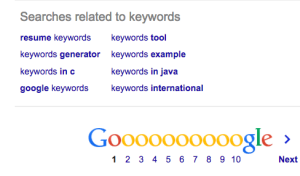By Rob Walker
Branded is a weekly column devoted to the intersection of marketing, business, design, and culture.
Instacart, the grocery delivery platform that recently filed for an initial public offering, says that it is profitable. That’s an appetizing prospect for investors, who are hungry for new tech IPOs. But the company’s recipe relies on a surprising ingredient: advertising.
While the service has dabbled with ad capabilities since 2019—selling brands preferred placement in the app, for example—the tactic has been ramped up and expanded over the past year or so, with new options for brands such as in-app video ads. This has become a significant part of Instacart’s business model, accounting for as much as $740 million, or nearly 30%, of its $2.5 billion revenue in 2022. That’s quite a boost, considering that the company’s overall profit for the year was $428 million (compared to a $72 million loss the prior year).
While it remains to be seen how this plays out for Instacart—I’ll get back to that—it’s certainly another remarkable example of the triumph of advertising absolutely everywhere. As noted here previously, the endless battle between mega-retailers Amazon and Walmart now includes rival, lucrative, ad businesses—part of a “retail advertising” trend that Instacart is arguably part of. As Marketing Brew noted last year, 9 of the 10 largest retailers in the U.S. (including Target, Walgreens, and Home Depot) operate their own “media networks.” The (paid) opportunity to promote a brand directly within a digital shopping process is obviously compelling—especially if you’re worried that your competitors might be promoting their brand in your place.
And it’s not just retail. Instacart’s gig economy peers Uber and Lyft are both pushing new ways to sell ads. And of course the hyper-competitive streaming sector is increasingly ad-reliant, with even longtime ad-opponent Netflix caving in to offer a commercials-backed tier. Are we reaching peak advertising? Just how many business categories can advertising support?
Instacart is a worthwhile case study. The service now works with 1,400 retailers covering 80,000 store locations, including big chains like Kroger, Safeway, and Costco; it reports that it processed more than 260 million orders last year. That’s impressive scale—the pandemic era was a big factor in this growth—and it’s precisely that volume that generates the consumer data that makes it attractive as an ad platform.
But while its ad business is reportedly up 24% in the first half of this year, actual delivery orders in that time frame are essentially flat. Moreover, the core delivery service is actually a lower-margin business than advertising. Thus, one critique is that Instacart’s profitability may now depend too much on advertising—potentially a problem if the relatively fledgling enterprise doesn’t pay off as well as brands expect, or if Instacart’s actual user base flags. Or, of course, if advertisers pull back spending more broadly and get pickier about which platforms they use.
“Instacart has a little bit of a tricky story because, on the one hand, it’s growing due to its growth in its ad sales,” one Wall Street analyst told Yahoo Finance. “But its growth in its actual transaction volume, meaning the value of groceries that are being delivered, actually isn’t growing very much.”
It does seem that Instacart has a lot riding on this revenue stream. Instacart had previously filed to go public last year—riding momentum born in the pandemic, when delivery services in general saw huge revenue spikes—but shelved those plans as the IPO market weakened. That was accompanied by a post-lockdown equilibrium that saw it lay off staff and slash its valuation; once valued at $39 billion, it was most recently pegged at $13 billion. Current CEO Fidji Simo, who took over in mid-2021 and has presided over the expansion of the company’s ad capabilities, is a veteran of Facebook, which, ostensibly, has built one of the monster ad businesses of the modern era.
Of course, Instacart’s advertising proposition isn’t the company’s main event, but it also is clearly not a mere side show to its actual delivery business. The company’s scale—working with 85% of physical grocers in the U.S., it says—is key to what it offers advertisers. This is an advantage as long as the flywheel spins in the right direction: more customers, more partners, more data, more advertising. But that also could become a vulnerability. What happens if, say, Instacart loses a major retail partner?
Kroger, for example, is developing its own retail ad platform. If that chain, or others, decide to break with Instacart, the flywheel could begin to go backwards. A robust ad business depends on a robust consumer-user base. Instacart, of course, could always boost promotion for its own service. It certainly would have plenty of options for placing ads.
(7)
Report Post









